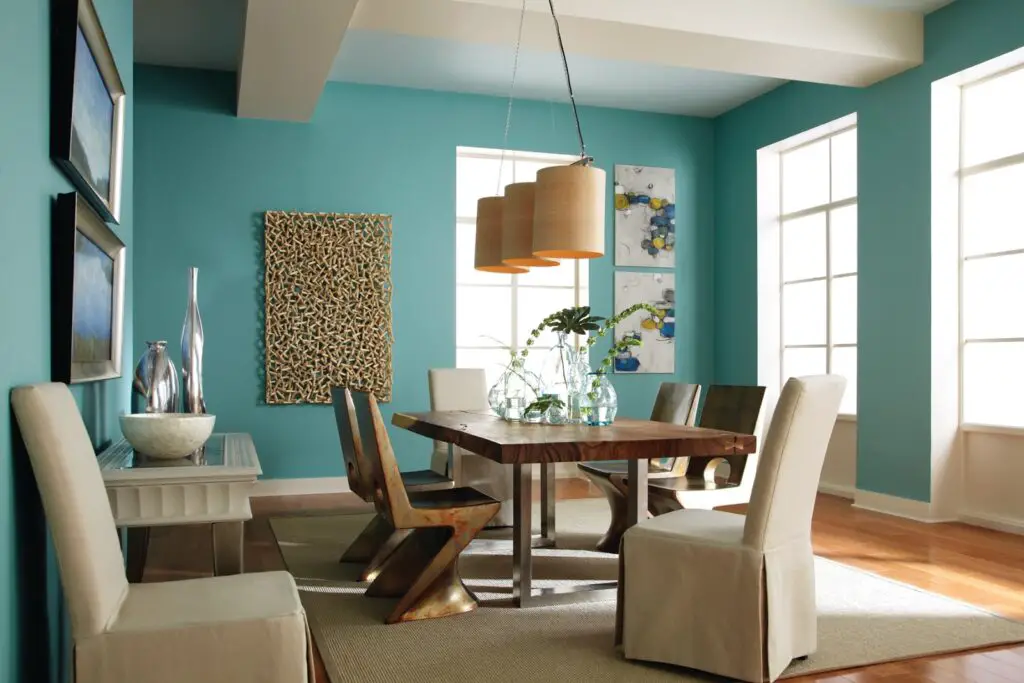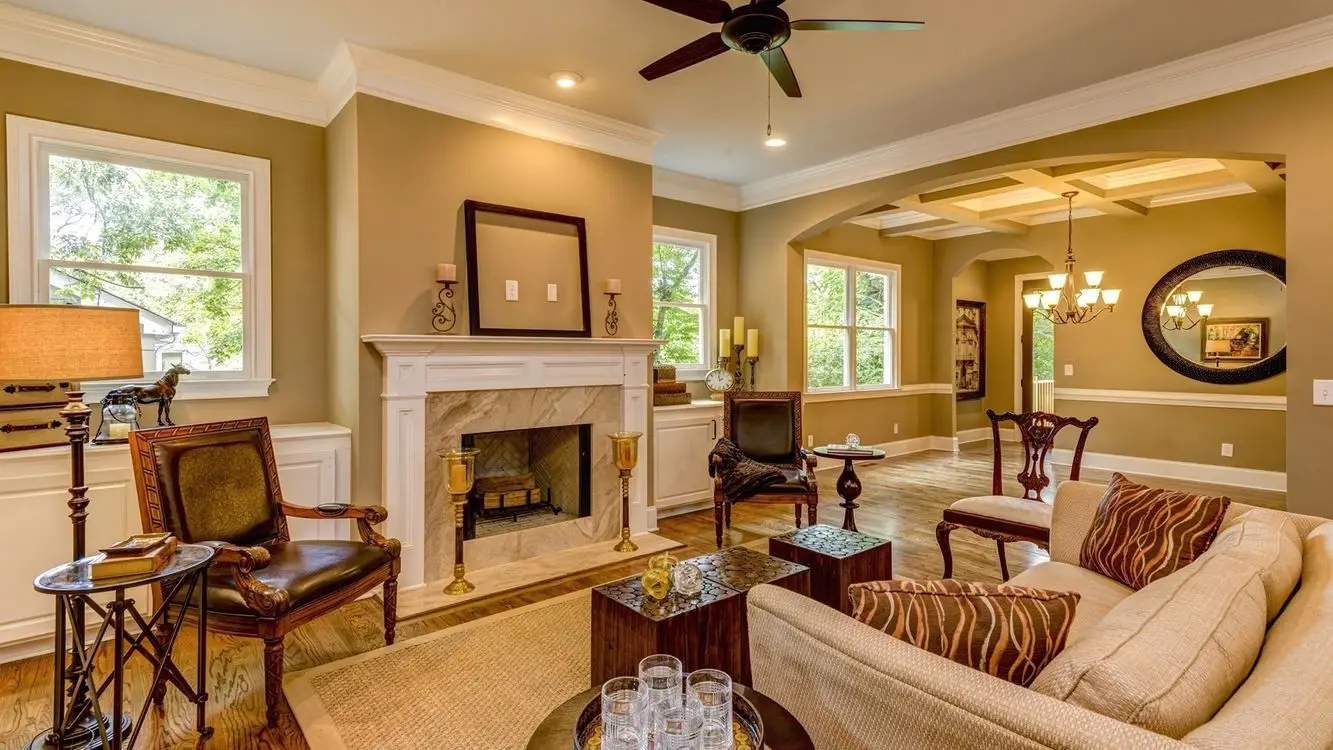How Many Paint Colors In A House Interior
Introduction
How Many Paint Colors In A House Interior: The quantity of paint colors you choose is like a paintbrush stroke in interior design, when your home’s walls are a blank canvas. “How Many Paint Colors in a House Interior” examines how colours, tints, and tones turn dull walls into vibrant expressions of personal style and ambiance.
In the symphony of design, selecting the right interior paint colors is akin to composing a melody, each shade harmonizing with the next to create an atmosphere that resonates with occupants and visitors alike. This guide is your compass in navigating the vast spectrum of choices, offering insights into the considerations that shape the decision-making process.
Embark on a journey through the transformative power of paint, and unlock the secrets to curating captivating interiors that reflect not only the colors on the walls, but the essence of those who call these spaces home.

How many colors for interior paint?
1 foundational lighter neutral for common spaces and baths (typically white, cream, greige, or beige) 1-2 accent colors for walls or accent rooms such as powder rooms, dining rooms, or offices. 1-4 bedroom paint colors to show each person’s individuality.
The number of colors you choose for interior paint can vary greatly depending on your personal style, the size of your home, the desired atmosphere in each room, and how cohesive you want the overall design to be. There’s no hard and fast rule, but here are some general guidelines to consider:
Accent Colors: These are bolder colors that can add personality and depth to specific rooms. Typically, one or two accent colors per room can work well. These might be used for a feature wall, furniture, or decor items.
Color Schemes: For a cohesive look, consider using a consistent color palette throughout your home.
Transitions: When deciding on colors, consider how the rooms flow into one another. Choose colors that transition smoothly from room to room, particularly in open-concept spaces.
Personal Preference: Ultimately, the number of colors you choose depends on your personal taste and the emotions you want each room to evoke. Some people prefer a more monochromatic and minimalistic approach, while others embrace a more eclectic mix of colors.
What is the 3 color rule in interior design?
Use the rule of three with color
The first color is your main color, the second color is still prominent, but not as much as the main color. The third color is your accent color that you use sparingly or sprinkled here and there. If you’re into numbers you could break this down into 60%, 30%, and 10%.
The “3-color rule” in interior design is a guideline used to create a cohesive and balanced color scheme within a room. It suggests that you should limit your color palette to three main colors when designing a space. These three colors serve distinct purposes:
- Dominant Color: This is the primary color that covers the majority of the room’s surfaces, usually the walls. The dominant color sets the overall tone and mood of the space.
- Secondary Color: The secondary color is typically used for large furniture pieces, such as sofas, chairs, or cabinets. It complements the dominant color and adds visual interest and contrast to the room.
- Accent Color: The accent color is used sparingly for smaller elements like throw pillows, decorative accessories, artwork, or an accent wall. It’s meant to draw attention to specific details or areas of the room.
The 3-color rule helps maintain a sense of cohesion and prevents the room from feeling too monotonous or overwhelming. By sticking to this guideline, you can create a well-balanced and visually pleasing interior that feels harmonious and thoughtfully designed. However, it’s important to note that this is a flexible guideline, and you can adapt it to suit your design preferences and the specific requirements of your space.
Can you have 3 paint colors in one room?
You can have three paint colors in one room, and it can be an effective way to add depth, interest, and visual complexity to your interior design.
Here’s a breakdown of how you might use three paint colors in a room:
- Dominant Wall Color: Choose one color as the dominant wall color. This color will cover the majority of the walls in the room, creating the foundational backdrop and setting the overall tone and mood. It’s often a neutral or calming color that creates a harmonious base for the room’s design.
- Secondary Wall Color: Select a second color for specific walls or architectural features, such as an accent wall, a fireplace surround, or a niche. This secondary color can add visual interest and create focal points within the room. It’s essential that the secondary color complements the dominant color to maintain cohesion.
- Accent Color: The third color, used as an accent, can be applied in smaller quantities. This color is typically used for details like trim, moldings, door frames, or built-in shelving. You can also introduce it through furnishings, textiles, and decor items. The accent color should tie into the overall color scheme, enhancing the room’s aesthetics without overpowering it.
To make this three-color approach work successfully, ensure that the colors harmonize well, considering factors like hue, saturation, and undertones. Creating a color palette or mood board can help you visualize how the colors will work together in your room’s design. Remember, interior design is about personal expression, so feel free to adapt this guideline to your unique style and preferences.
How many wall colors can you have in one room?
There’s no official limit of how many colors are allowed in one room. But the saying “the more the merrier” doesn’t always apply when it comes to color. Want to know whether or not you have too much color mixing in one room? The room will feel the opposite of peaceful — sometimes it even feels like it’s closing in.
What is the rule for interior paint color?
Color rules – these are the ideas interior designers swear by for choosing a palette
Consider the 60-30-10 rule.
Choose a color mood.
Use the color wheel for color pairings.
Create a throughline between rooms.
Choose between a warm or cool color scheme.
Don’t discount clashing colors.
There isn’t a strict rule for interior paint color because color choices in interior design are highly subjective and dependent on individual tastes, the room’s purpose, and desired ambiance. Instead of rigid rules, there are guidelines to help you make informed color choices. These guidelines consider factors like the room’s size, lighting, architectural features, and the desired mood. Common advice includes using lighter colors in small rooms to make them feel more spacious and choosing warm or cool colors based on the desired atmosphere. Ultimately, the best color for your interior paint is one that aligns with your vision and complements the overall design.
How many colors in a room design?
When decorating a room, using four colors is an ideal. There should be one Predominant color: color that you see first, and is used most in the room. One Subordinate color: second most used color in a room. AND one, but no more than two Accent colors.
The number of colors in a room design can vary widely depending on the design style and complexity you desire. While some rooms may use a limited color palette of two or three colors for simplicity and cohesion, others may incorporate a broader range of colors. The key is to strike a balance between variety and harmony. You can introduce additional colors through furniture, textiles, artwork, and decor items while ensuring that they complement the main color scheme and contribute to the desired look and feel of the room.
What are the 7 rules of interior design?
There are seven main principles of interior design: balance, harmony, rhythm, proportion and scale, emphasis, contrast, and details.
There are no strict “7 rules” of interior design, but there are several fundamental principles and guidelines that designers often follow. These include concepts like balance, proportion, unity, rhythm, contrast, emphasis, and harmony. Designers also consider elements like color, texture, pattern, and scale when creating a cohesive and aesthetically pleasing space. However, the specific rules and principles applied can vary based on the individual designer’s style and the unique requirements of each project. Interior design is a creative field, and while these principles provide a solid foundation, there’s room for flexibility and innovation to suit different design goals and preferences.
Can you have 3 different colors of walls?
You can make multiple walls into accent walls, but they will compete for your attention. However, you can change the feel of your space with multiple accent walls.
Yes, you can have three different colors of walls in a room. Using three wall colors can create a visually dynamic and engaging space. However, it’s important to do so thoughtfully and with a clear design intention. Typically, you might designate one color as the main wall color for the majority of the room, another color for an accent wall to draw attention to a specific area or architectural feature, and a third color for trim, molding, or built-in elements. The key is to ensure that the colors coordinate well and contribute to the overall design concept and ambiance of the room. Careful planning and a good sense of color harmony are essential to make this approach successful.

Conclusion
As we conclude this exploration into the world of paint colors within a house’s interior, it’s evident that choosing the right hues goes beyond aesthetics; it’s an art form that involves understanding emotions, perceptions, and personal preferences. The colors you select become integral to the story your home tells, shaping the atmosphere and leaving a lasting impression on all who enter.
Remember that the journey of house color selection is not solely about adhering to design trends, but about crafting an environment that resonates with your unique essence. Whether you opt for a harmonious blend or daring contrasts, the key lies in balance and coherence.
As you embark on your interior design journey, let your choices be a reflection of your identity, a manifestation of your aspirations, and a testament to the artistry that resides within you. The canvas of your home awaits the strokes of your imagination, painted with the colors that evoke joy, comfort, and inspiration. Here’s to creating spaces that truly feel like home.








